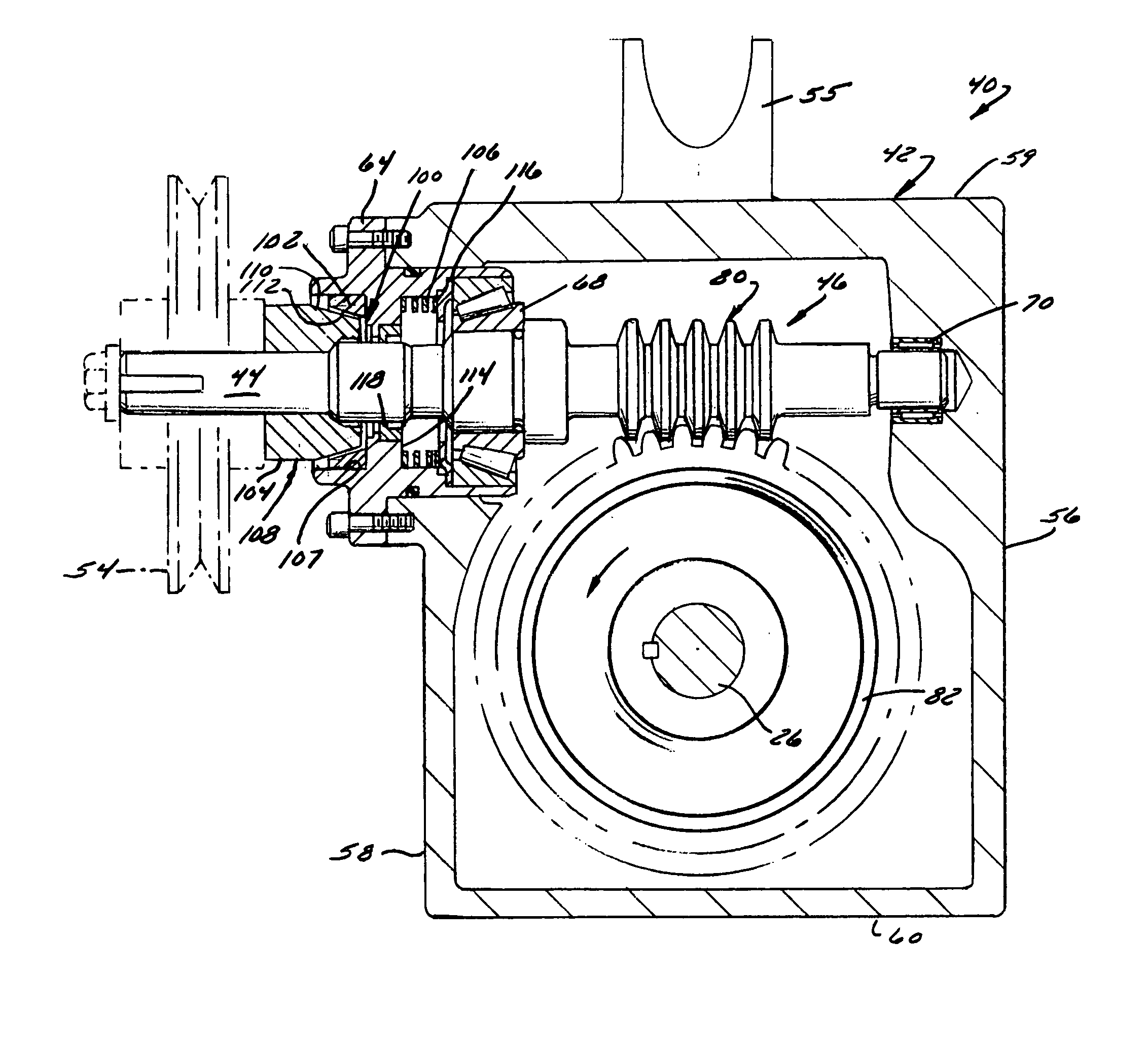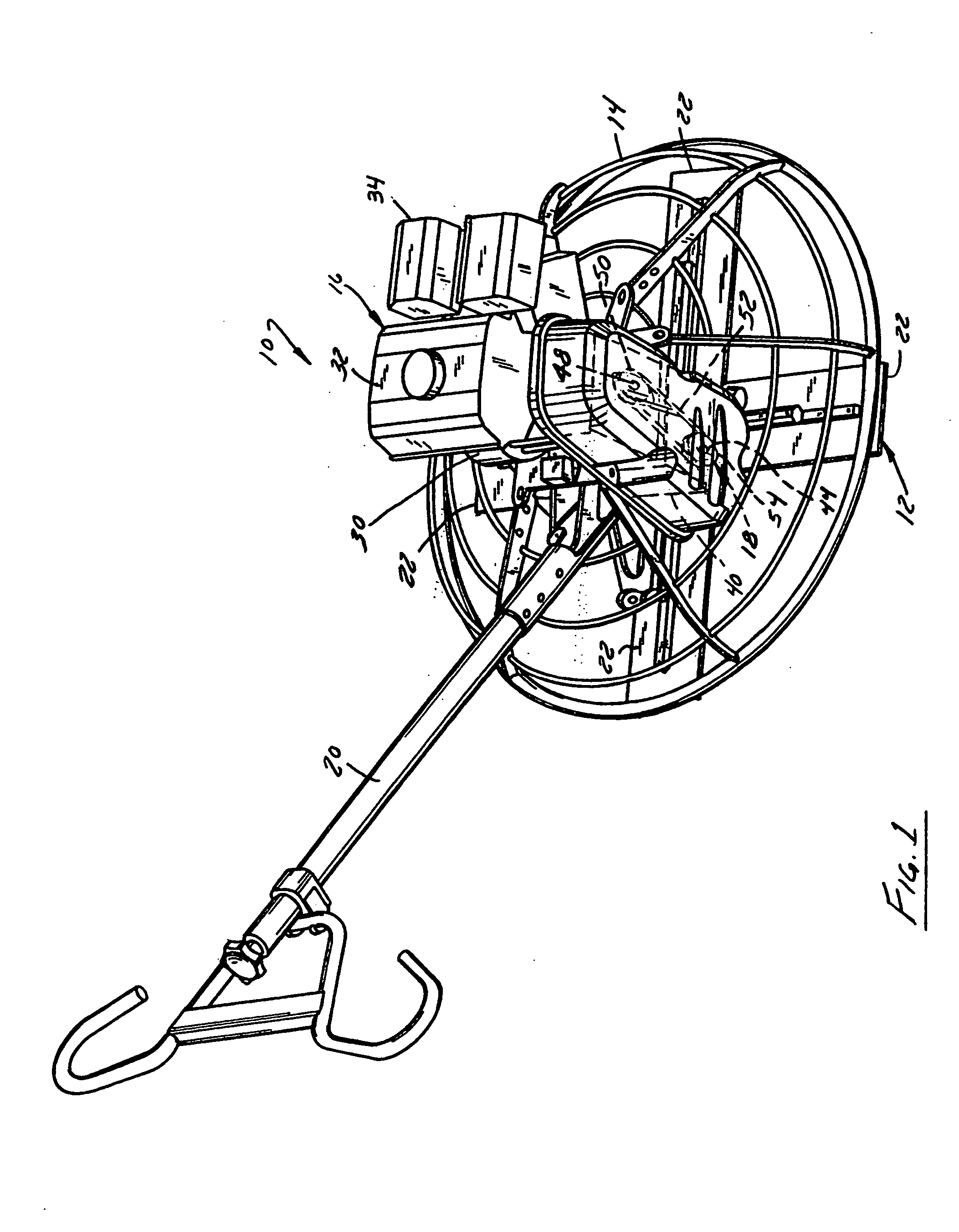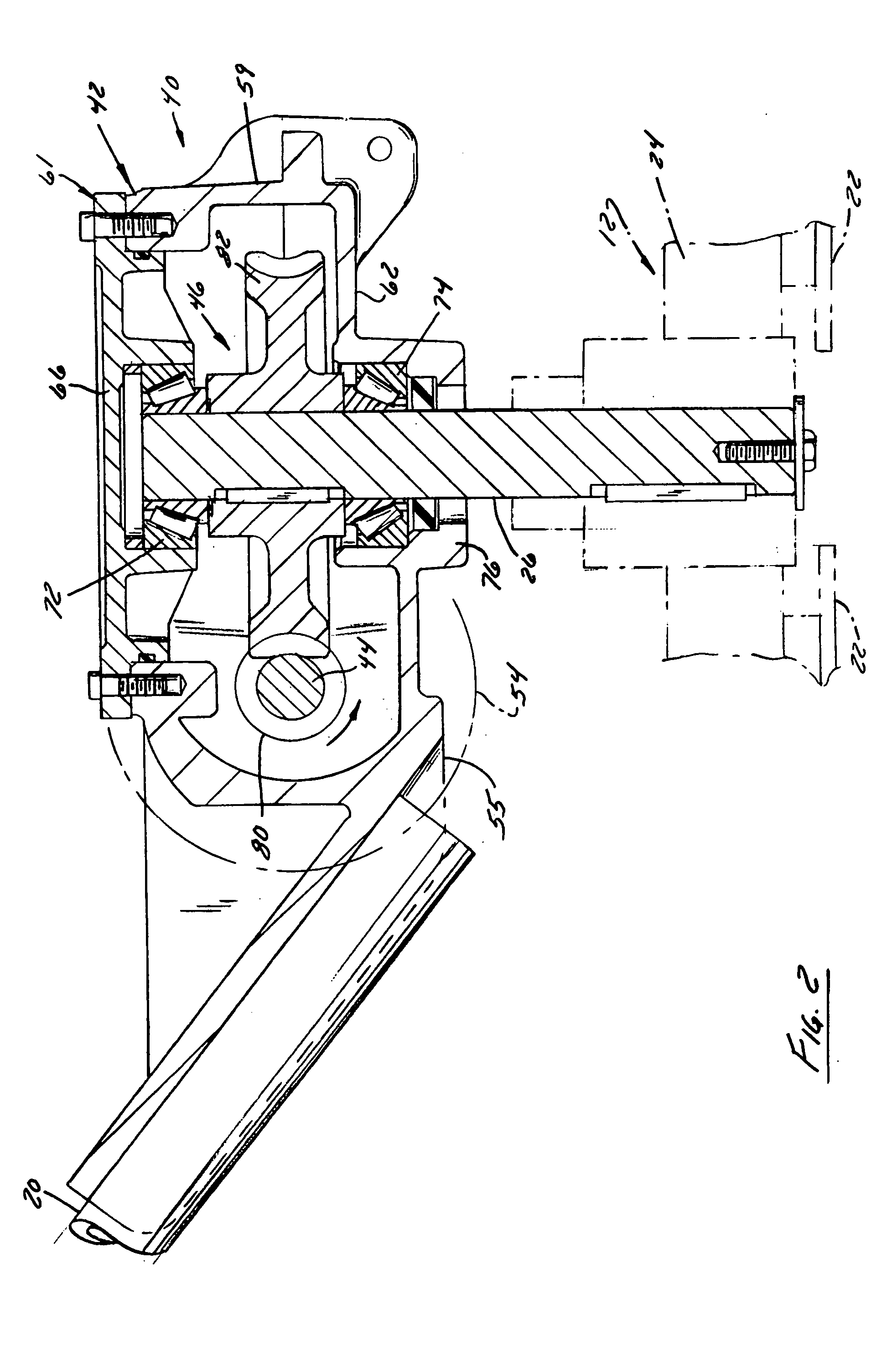Trowel gearbox brake
a gearbox and trowel technology, applied in the direction of gearing, manufacturing tools, ways, etc., can solve the problems of affecting the operation of the trowel, and causing the trowel to spin undetectedly, so as to inhibit or prevent the rotation of the trowel's frame, and hinder the operator's ability to steer
- Summary
- Abstract
- Description
- Claims
- Application Information
AI Technical Summary
Problems solved by technology
Method used
Image
Examples
Embodiment Construction
1. Resume
[0022] As indicated above, the invention resides in the automatic braking of an active component of a rotary trowel's drive train in response to the cessation of torque transfer to the rotor from the trowel's prime mover in order to inhibit or prevent undesired rotation of the trowel's frame and handle. Preferably, the brake moves with a component of the drive train that is subject to axial reaction forces upon the delivery of drive torque therethrough. A preferred embodiment of the invention will now be described in conjunction with a walk behind trowel having an internal combustion engine as a prime mover and a brake built into the trowel's gearbox. However, the invention is not so limited. It also potentially applies to ride on trowels and / or to a brake that acts on components of the trowel's drive system other than the gearbox.
2. System Overview
[0023] Referring to FIG. 1, a walk behind trowel 10 is illustrated that incorporates a gearbox brake assembly 100 (FIGS. 3...
PUM
| Property | Measurement | Unit |
|---|---|---|
| torque | aaaaa | aaaaa |
| axial reaction forces | aaaaa | aaaaa |
| drive torque | aaaaa | aaaaa |
Abstract
Description
Claims
Application Information
 Login to View More
Login to View More - R&D
- Intellectual Property
- Life Sciences
- Materials
- Tech Scout
- Unparalleled Data Quality
- Higher Quality Content
- 60% Fewer Hallucinations
Browse by: Latest US Patents, China's latest patents, Technical Efficacy Thesaurus, Application Domain, Technology Topic, Popular Technical Reports.
© 2025 PatSnap. All rights reserved.Legal|Privacy policy|Modern Slavery Act Transparency Statement|Sitemap|About US| Contact US: help@patsnap.com



